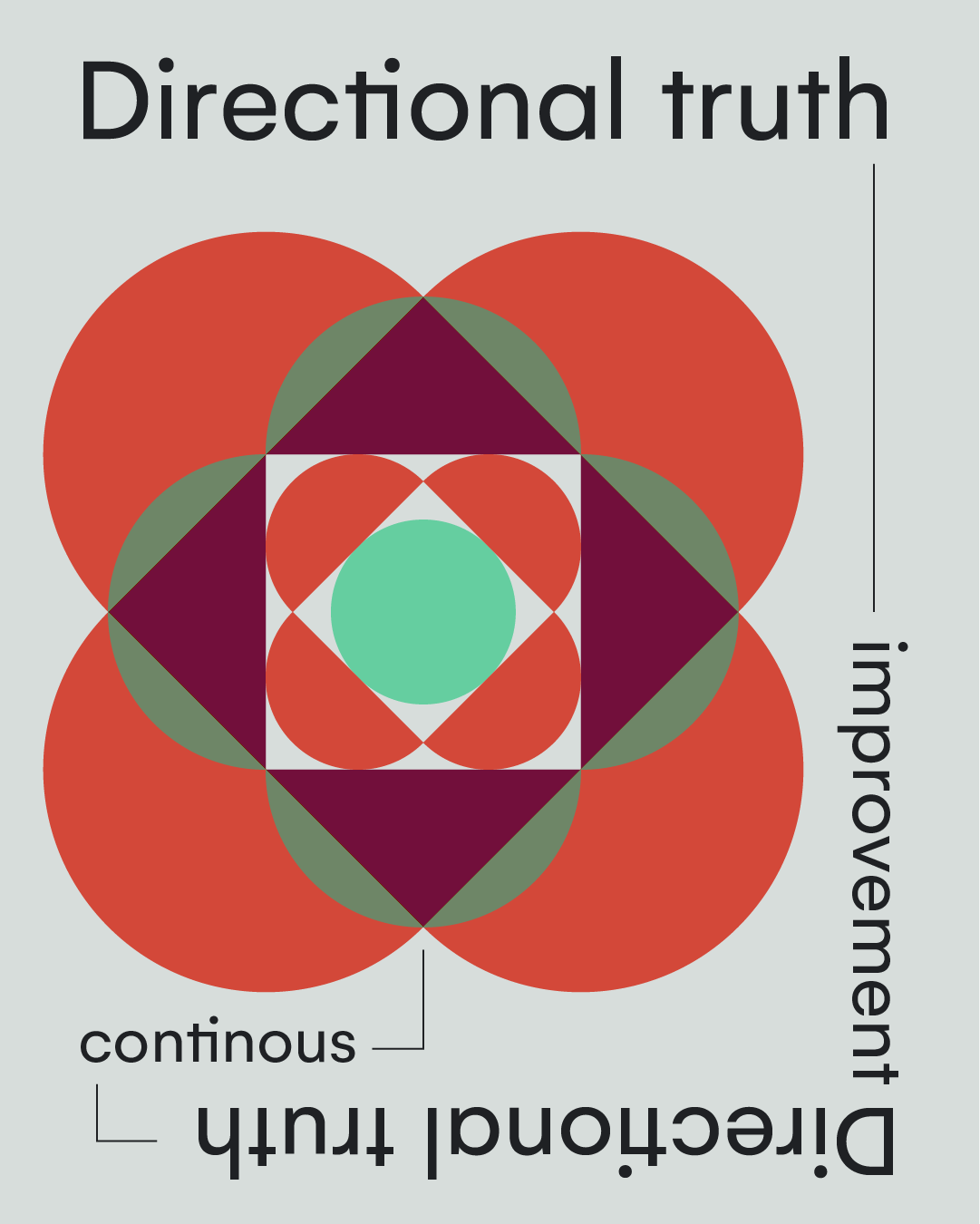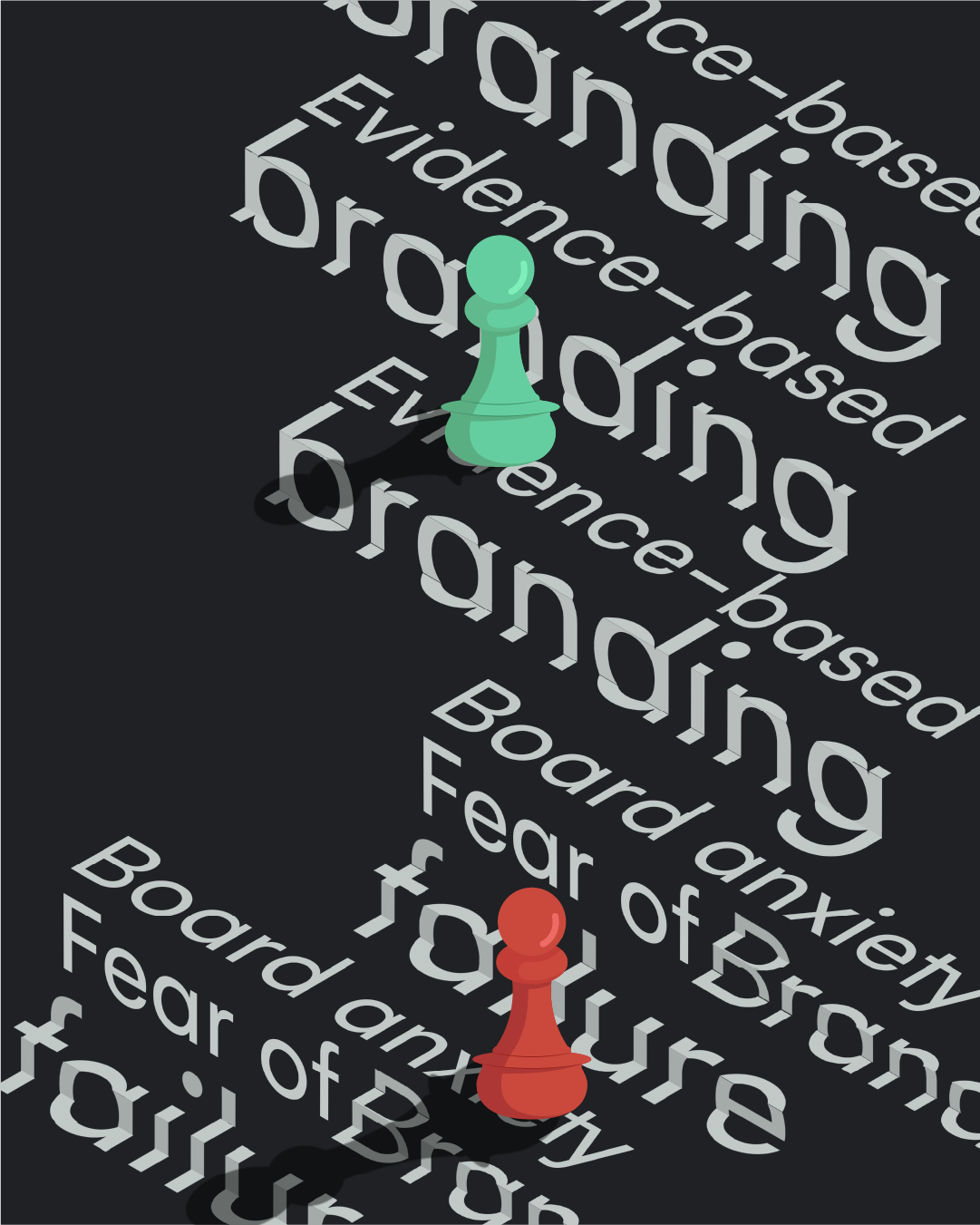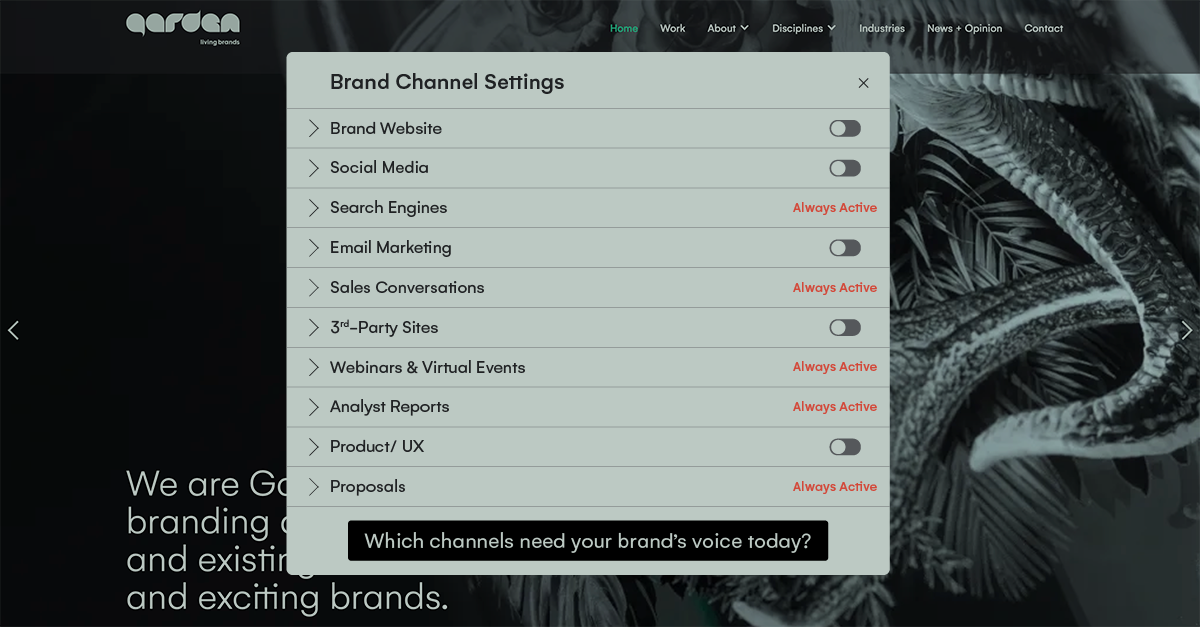What are brand pillars and why are they important?
Why do some brands feel inconsistent and forgettable, while others are clear, compelling, and trusted? The answer isn't a bigger marketing budget or a flashier logo; it lies in their foundation. So often, brands that fail to connect are built on shifting sands, lacking a core set of beliefs to anchor their every move.
Building a recognisable, trustworthy brand requires more than just a striking logo or clever tagline. Brand pillars serve as the foundational elements that support your entire brand structure, guiding everything from customer interactions to strategic decisions. We seek the unique, learn the unlearnable, and simplify the complicated when building brand pillars that truly resonate with audiences.
What are brand pillars?
Brand pillars are the three to five fundamental values or characteristics that define a brand's identity. They serve as a strategic framework that guides every action the company takes, ensuring consistency across all business operations, from marketing to product development.
Brand pillars translate a brand's purpose and mission into actionable principles. They are the core tenets that everything else is built upon, acting as the load-bearing columns that support the entire brand structure. For pillars to be effective, they must be unique, believable to the audience, and actionable for internal teams.
The role of brand pillars extends far beyond basic marketing strategies. They act as a compass for your organisation, influencing:
- Strategic decision-making at all levels
- Communication with customers and stakeholders
- Product development and service delivery
- Company culture and employee behaviour
- Marketing and promotional activities
Brand pillars shape your company identity by creating a cohesive framework that aligns your brand's purpose, personality, and promises. When properly established, they ensure consistency across all touchpoints and help build lasting connections with your target audience.
How are brand pillars different from a mission statement?
While related, these concepts serve different functions. If a brand is a building:
- Purpose is the 'why' - the reason for its existence.
- Mission is the 'what' - the blueprint for what you will build.
- Brand pillars are the 'how' - the structural columns that ensure the building is strong and consistent.
Pillars make the abstract ideas of a mission statement tangible and guide day-to-day decisions.
What is the difference between brand pillars and brand personality?
Brand personality describes how a brand expresses itself, including its tone of voice and character. Brand pillars define what a brand fundamentally stands for.
For example, a brand with a fun-loving "Jester" personality might have a pillar of "Joyful innovation". A brand with a knowledgeable "Sage" personality might have a pillar of "Accessible wisdom". The pillars provide the substance, while the personality provides the style.
How do brand pillars fit into brand architecture?
Brand pillars are the central hub from which all other brand elements radiate. They inform:
- Messaging and content strategy
- Visual identity (logo, colours, typography)
- Customer experience
- Product development
- Internal company culture
They create a system where every touchpoint, from a social media post to a customer service email, feels consistent and authentic.
How many brand pillars should you have?
The industry best practice is to establish between three and five brand pillars.
- Too few pillars can be restrictive and may not capture the full essence of the brand.
- Too many pillars can become diluted, unmemorable, and difficult for teams to execute consistently.
A focused set of three to five pillars ensures clarity and helps maintain a strong, recognisable brand identity.
The five essential brand pillars
Every successful brand is built upon five critical pillars that work together to create a compelling and authentic brand presence.
Purpose and mission
Your brand's purpose forms the foundation of everything you do. It answers the fundamental question of why your brand exists beyond making profits. A clear mission helps guide decision-making and inspires both employees and customers to connect with your brand on a deeper level.
Brand perception and reputation
How your audience perceives your brand significantly impacts its success. This pillar focuses on managing and shaping the impressions, associations, and experiences people have with your brand. Strong brand perception builds trust and creates emotional connections that drive loyalty.
Brand personality and voice
Just as people have distinct personalities, your brand needs a unique character that resonates with your target audience. This includes:
- Tone of voice and communication style
- Visual identity and design elements
- Brand values and behaviours
- Emotional associations and connections
Position and values
Your brand position defines where you stand in the market and what makes you different from competitors. This pillar encompasses:
- Market positioning
- Core values and beliefs
- Unique value proposition
- Competitive advantages
Promotion and experience
The final pillar focuses on how you deliver your brand promise through every interaction. This includes:
- Customer experience at all touchpoints
- Marketing and communication strategies
- Product and service delivery
- Customer service and support
Why brand pillars matter for business success
Brand pillars play a crucial role in establishing and maintaining a strong market presence. They contribute to business success in several key ways:
Building trust and authenticity
When your brand pillars are clearly defined and consistently applied, they create a sense of authenticity that resonates with audiences. This authenticity builds trust, which is essential for long-term success in any market.
Creating meaningful differentiation
In crowded markets, strong brand pillars help your business stand out by clearly communicating what makes you unique. They provide a framework for differentiation that goes beyond product features or pricing strategies.
Guiding strategic decision-making
Well-defined brand pillars act as a filter for business decisions, ensuring all activities align with your core identity and values. This alignment helps maintain consistency and builds stronger brand recognition over time.
Strengthening customer loyalty
When customers connect with your brand pillars, they're more likely to develop lasting loyalty. These emotional connections often prove stronger than practical considerations like price or convenience.
Aligning internal culture
Brand pillars help create a unified company culture by providing clear guidelines for behaviour and decision-making at all levels of the organisation.
How to develop your brand pillars
Building strong brand pillars requires strategic thinking and a clear understanding of your market position. Here's a practical framework for developing pillars that drive brand success:
Step 1: Define your core purpose
- What problem does your brand solve?
- Why do customers choose you over competitors?
- What unique value do you bring to the market?
Step 2: Identify key differentiators
- List 3-5 unique attributes that set you apart
- Map these against competitor offerings
- Validate them through customer feedback
- Example framework:
- Quality differentiator (How you're better)
- Process differentiator (How you're different)
- Value differentiator (Why you matter)
Step 3: Align with customer needs
- Conduct customer interviews
- Analyse purchase decisions
- Map customer journey touchpoints
- Identify emotional and functional benefits
Step 4: Create your pillar framework
Quick-start template:
- Purpose pillar: Your 'why'
- Value pillar: Your promise
- Personality pillar: Your character
- Position pillar: Your place
- Experience pillar: Your delivery
Step 5: Test and implement
Validation checklist:
- Does each pillar support business goals?
- Can they be clearly communicated?
- Are they measurable?
- Do they resonate with target audiences?
- Can they guide decision-making?
A tip for you: Document your pillars in a single-page framework that teams can easily reference and apply.
Examples of successful brand pillars
Let's examine how leading brands structure their pillars and what makes them effective.
Nike: Building inspiration through powerful pillars
Core pillars:
- Innovation: Constant advancement in athletic technology and design
- Performance: Focus on helping athletes achieve their best
- Sustainability: Commitment to eco-friendly practices and materials
- Community: Creating inclusive spaces for sports and fitness
- Inspiration: "Just Do It" mentality that transcends sports
Implementation: Nike consistently reinforces these pillars through athlete partnerships, product innovation, and community programmes. Their advertising focuses on storytelling that combines performance with emotional resonance.
Patagonia: Environmental leadership pillars
Core pillars:
- Environmental activism: Active engagement in climate issues
- Product durability: Building long-lasting gear
- Transparency: Open communication about supply chain and impact
- Community responsibility: Supporting environmental causes
- Innovation: Developing sustainable materials and practices
Implementation: Patagonia's "Don't Buy This Jacket" campaign perfectly demonstrated their commitment to these pillars, prioritising environmental responsibility over sales.
Apple: Innovation and experience pillars
Core pillars:
- Design excellence: Focus on aesthetic and functional beauty
- User experience: Intuitive, seamless interaction across devices
- Innovation: Pushing technological boundaries
- Premium quality: High-end positioning and materials
- Ecosystem integration: Connected product experience
Implementation: Apple's retail stores physically embody these pillars through design, service approach, and product presentation.
Airbnb: Community-driven pillars
Core pillars:
- Belonging: Creating a global community
- Trust: Building safe, reliable connections
- Local authenticity: Delivering genuine experiences
- Innovation: Reimagining travel and accommodation
- Inclusivity: Welcoming all travellers and hosts
Implementation: Their "Live There" campaign and host community programmes directly support these pillars through authentic storytelling and community building.
Lush: Ethical commerce pillars
Core pillars:
- Sustainability: Zero-waste packaging and sourcing
- Ethics: Fighting against animal testing
- Transparency: Clear ingredient sourcing and practices
- Handmade quality: Artisanal production methods
- Customer education: Sharing product knowledge and impact
Implementation: Every product, store design, and campaign reinforces these pillars through consistent messaging and practices.
Key takeaways from successful brand pillars:
- Pillars must be actionable and measurable
- Each pillar should influence daily operations
- Successful implementation requires company-wide commitment
- Pillars should guide both internal and external communications
- Regular evaluation ensures pillars remain relevant and effective
How to activate your brand pillars
Defining pillars is the first step. Activating them across the organisation is what turns strategy into reality. Read our brand activation guide.
Embed pillars into brand guidelines
Your brand pillars should be the first chapter of your brand guidelines. They provide the strategic 'why' behind all executional elements like your logo, colour palette, and tone of voice. Every rule in your guidelines should be a direct expression of one or more pillars.
Translate pillars into messaging and content
Use each pillar as a lens to tell stories and communicate value. A pillar of "Effortless mastery" could lead to a content strategy focused on expert-led tutorials, time-saving tips, and case studies that highlight customer success.
Empower your team to become brand champions
Your employees must understand and believe in the pillars. Launch the pillars internally, conduct training sessions, and integrate them into performance reviews and recognition programmes. When your team embodies the pillars, your customers will feel the difference.
The future of brand pillars
Brand pillars form the foundation of memorable, impactful brands that stand the test of time. At Garden Studio, we specialise in developing and implementing robust brand pillars that resonate with your target audience and drive business growth.
Our unique approach combines deep customer insights with strategic brand development. We seek the unique, learn the unlearnable, and build the loveable, helping organisations discover and articulate their distinctive brand pillars.
Our process includes:
- Comprehensive brand analysis and optimisation
- Customer insight development through tailored tools
- Brand innovation strategy
- Experience mapping and implementation
- Brand perception mapping and monitoring
As your partner in brand development, we provide a collaborative, ego-free environment where creativity and strategic thinking combine to build compelling brand identities. Our team of brand strategists, creative directors, and implementation consultants work together to ensure your brand pillars not only look good on paper but deliver real business results.
Ready to build stronger brand pillars? Let's create something remarkable together - get in touch.













.jpg)





































































